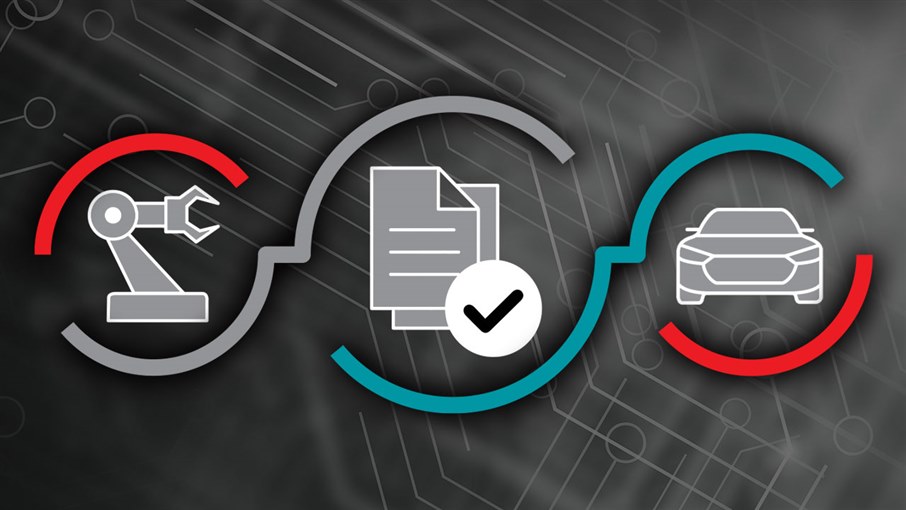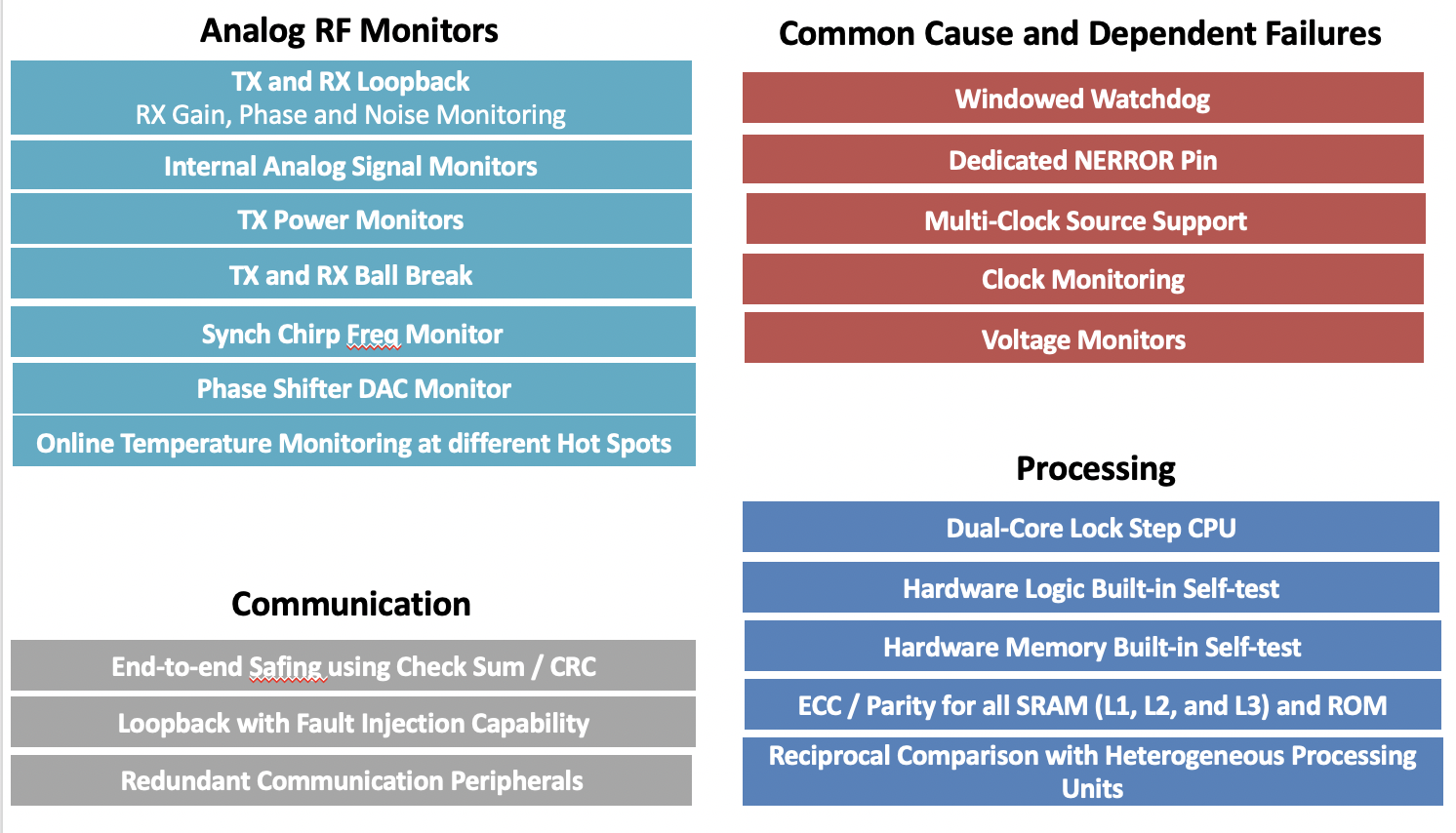SSZT167 may 2021 IWR6843

According to the U.S. Bureau of Labor Statistics, there were 2.8 million nonfatal workplace injuries in 2018. As design engineers, we often think about our world – or more specifically, the applications we develop – in binary code: 1s and 0s. Many industrial accidents are wholly or partly caused by human error. Functional safety is the concept of anticipating what could go wrong and reducing risk to an acceptable level. It is important to incorporate functional safety features into technology in order to help minimize system errors.
As the automotive and industrial markets become more autonomous, they face an increasing need to meet stricter functional safety standards. These standards are designed to minimize equipment failures and physical injury that could result from two types of hardware faults:
- Systematic faults, which are caused by mistakes in the design or manufacturing process of an element, subsystem or system.
- Random hardware faults, which are unpredictable failures that occur in a hardware element. These faults are detectable and preventable with the help of built-in functional safety mechanisms.
Functional safety involves a safety integrity level (SIL) or other similar quantitative metric. A SIL applies to a safety function from start to finish, and affirms that the system reverts to a safe state or performs even during incorrect operation or a loss of functionality (in fault-tolerant architectures). Both the design and process must follow functional safety standards such as International Electrotechnical Commission (IEC) 61508 or International Organization for Standardization (ISO) 26262, and pass independent functional safety audits in order to achieve the corresponding quantitative metrics that assess appropriate safety standards.
Addressing Systematic and Random Hardware Faults
It is particularly important to meet safety standards when it comes to radar sensing. A radar sensor could be affected by failures that occur in end equipment, or because of environmental conditions such as poor visibility, extreme heat or humidity, or vibrations from machinery.
To address these potential failures, TI millimeter-wave (mmWave) radar devices are designed according to an extensive hardware and software development process and are supported by device certification from Technischer Überwachungsverein (TÜV) SÜD. TI mmWave radar devices are specifically designed for automotive and industrial applications that require compliance with ISO 26262 and IEC 61508. All of TI’s mmWave radar functional safety devices come with a functional safety manual and a failure mode, effects and diagnostic analysis (FMEDA), with features such as product function tailoring, failure-in-time estimation, safety mechanism tailoring and custom diagnostics, enabling you to independently tune the microcontroller FMEDA to satisfy your application-specific functional safety requirements. For general-purpose industrial sensors, household goods and appliances, TI mmWave radar devices are developed according to hardware development processes compliant with ISO 9001 and International Automotive Task Force 16949.
Built-in Autonomous Monitoring for Safer Machinery
One important consideration is the need to build systems that manage potentially hazardous failures with real-time safety functionality. The design must never deviate from its intended function. For automotive applications such as hybrid electric vehicles, collision avoidance and automatic braking systems, the system must correct itself in case of failure without human input in order to avoid serious injuries. Similarly, in automated industrial applications, systematic and random fault verification must occur in real time.
TI mmWave radar sensors have built-in monitoring loopback schemes that continuously track system functionality and enhance real-time functional safety operation. These schemes reduce loading on the host processor and maintain overall performance and system efficiency.
With multiple built-in safety mechanisms, as shown in Figure 1, TI mmWave radar sensors provide the diagnostic coverage required to meet a random hardware capability as high as Automotive Safety Integrity Level B/SIL 2 at the component level.
 Figure 1 TI mmWave radar sensor built-in safety mechanisms
Figure 1 TI mmWave radar sensor built-in safety mechanismsDeveloping with Safety-compliant TI mmWave Radar Sensors
Safety-compliant systems minimize the risk associated with failures that could cause physical injury or damage to an environment or property. While addressing both systematic and random hardware faults, functional safety compliant TI mmWave radar sensors like the IWR6843 enables you to reduce system complexity and time to market, while meeting high standards in system-level risk mitigation. With these benefits, you can have peace of mind knowing that you are designing-in the safest technology, protecting your systems and the people who work with them.
The fact is automotive and industrial markets require a lot of human interaction. Functional safety enablers in technology can improve the overall interaction and mitigate risk If you are designing sensing capabilities in your automotive application, it’s important to comply with functional safety standards and protect employees and machinery.
Additional Resources
- Leverage our Safety Enablers document for a complete list of TI mmWave radar safety resources.
- Accelerate your development with the TI mmWave radar Diagnostic & Monitoring Reference Design
- Watch the TI mmWave radar training series.